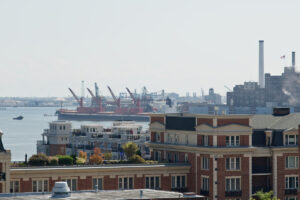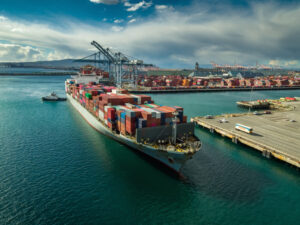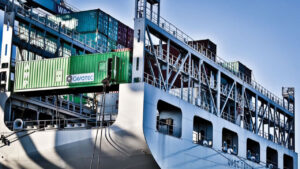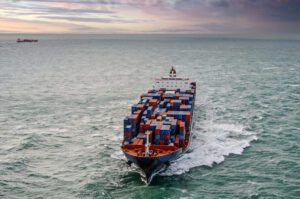The Port of Antwerp is expecting a surge of containerised trade from the 12 April following the blockage and reopening of the Suez Canal.
In a statement, the Port said the consequences of the waterway’s suspension will be felt for “a long time to come”; the immediate results will be busier than normal terminals and cargo volatility.
The impact on the global transport of containers is likely to persist for a few more months, because there is no spare capacity of container ships to deploy extra and to cope with these shortages, the Port said.
The impact can be felt today at many retailers and their customers, who notice that orders for products – such as bicycles and the like – are being delayed.
However, it also said it is very difficult to estimate how badly the Port will be affected and container terminals are preparing for increased traffic.
Barbara Janssens, corporate communications manager, said the Port will be busier than usual.
“The first ships to sail behind the Ever Given usually first visit Rotterdam and Hamburg and only then arrive at the Port of Antwerp.
“We are counting on 12-14 days after the Suez incident. It is not easy to estimate the exact impact in terms of crowds in the Port of Antwerp.
“Much depends on the decisions of shipping companies and terminals, which look at things from a global perspective.
“The incident is a real puzzle for terminals and shipping companies.
“The delays are in addition to the delays that have been going on since the end of 2020 – due to, among other things, increased cargo, shortages of container ships and the covid situation that required manpower to be re-scheduled – and putting the terminal capacity under considerable pressure.”
The Port said it is talking to shipping companies to see where space for containers can be made free at its terminals.
For example, there are already terminals that have decided that containers for export may only be on the terminal a few days before they can be loaded.
It is also being examined how we can make more optimal use of the capacity inland and make even more use of inland shipping and rail. It comes down to working closely with the entire chain to make the best possible use of available capacity.
“Fortunately, container transhipment in Antwerp is spread over the different shipping areas and we are not predominantly dependent on the Far and Middle East,” Janssens added.
“That means that we as Port of Antwerp are somewhat less sensitive to incidents in the supply chain.
“Our terminal operators are also among the most efficient in the world and we have large storage capacity.
“It has also helped us in covid times to cope with peaks and troughs in supply and demand and has ensured that we could continue to supply the country.
“It is expected that the impact on the total throughput figures of Port of Antwerp will remain limited.
“We will see more volatility: peaks and troughs in throughput, but expect that to level out again in the total annual figures.
“Containers have continued to perform very well in recent quarters, despite the covid crisis.”









